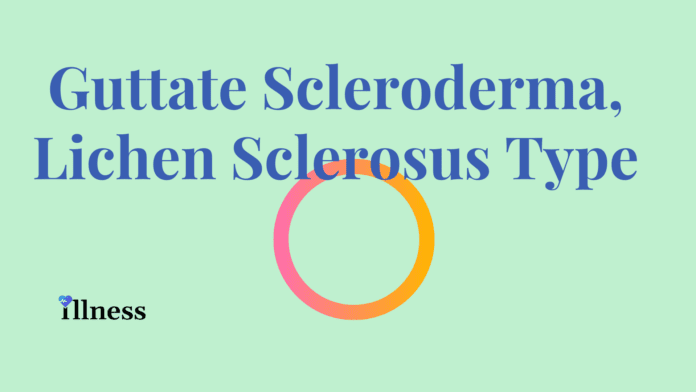Overview Of Guttate Scleroderma, Lichen Sclerosus Type
Guttate Scleroderma, Lichen Sclerosus Type is synonymous with the term Lichen Sclerosus. Lichen Sclerosus (LS) was described for the first time in 1887. Since then, many synonyms have been in use, notably ‘Kraurosis vulvae,’ ‘vulvar dystrophy,’ ‘white spot disease,’ and ‘lichen sclerosus et atrophicus’ or ‘guttate scleroderma.’ All of these terms have been abandoned and replaced by ‘lichen sclerosus,’ which is now used for genital and extragenital lesions.
Lichen sclerosus is a chronic skin disorder that is more common in women, most often affecting the external part of the vagina (vulva) or the area around the anus. In men, it typically affects the tip of the penis. It can occur at any age but is usually seen in women over age 50. Some people have no symptoms, while others may experience itchiness (sometimes severe), discomfort, or blistering. It often lasts for years and can cause permanent scarring. The underlying cause of lichen sclerosus is not fully understood but it is thought to relate to an autoimmune process. Treatment may include topical steroids or other types of topical creams and/or surgery.
Causes Of Guttate Scleroderma, Lichen Sclerosus Type
You can’t give lichen sclerosus to someone else. No one knows what exactly causes the disease. Some possible causes include:
Some possible causes include:
• An overactive immune system.
• Hormone problems.
• Inheriting the risk for getting the disease from your parents.
• An injury that damaged or scarred the skin.
Symptoms
You may have no symptoms if you have a mild form of guttate scleroderma, lichen sclerosus type.
If you do have signs, they can include:
• Small white spots on the skin (early in the disease).
• Spots that grow into bigger patches. The skin over these patches becomes thin and crinkled.
• Skin that tears and bruises.
• Skin that becomes scarred.
• Itching, which is very common.
• Pain.
• Bleeding.
• Blisters.
Treatment Of Guttate Scleroderma, Lichen Sclerosus Type
Patches on the arms or upper body usually go away after time without treatment. The disease may also go away after puberty.
Patches of the genital skin should be treated, even if they aren’t painful or itchy. These patches can scar, causing problems with urination or sex. There is also a very small chance that skin cancer may develop in the patches. You should see your doctor every six to 12 months in order to follow and treat any skin changes.
Possible treatments for the disease include:
• Ointments and creams, which can help with itching and to keep the disease from coming back.
• Surgery to remove the genital patches in men.
You should talk to your doctor about the best treatment for you.
Other
Is there a test for lichen sclerosus?
Usually, a doctor will take a small piece of skin and look at it under a microscope to diagnose lichen sclerosus. In more severe cases, doctors can just look at you to diagnose the disease based upon how it has affected your skin.



